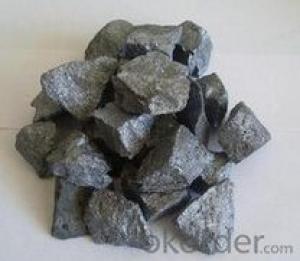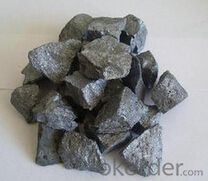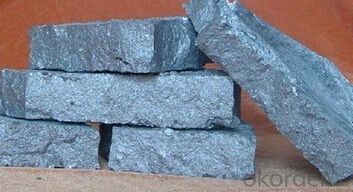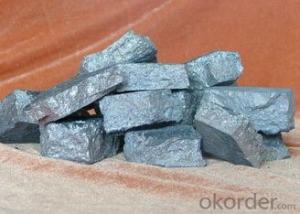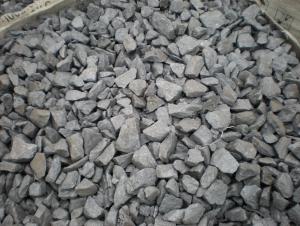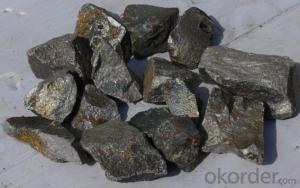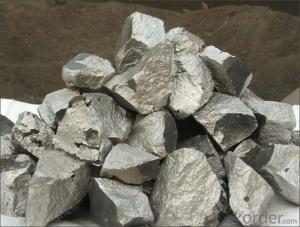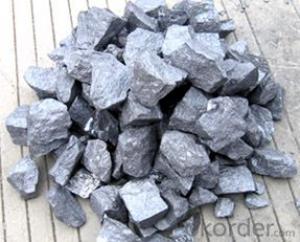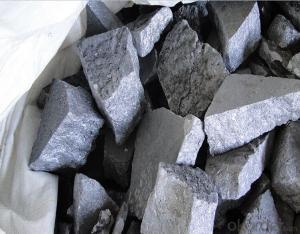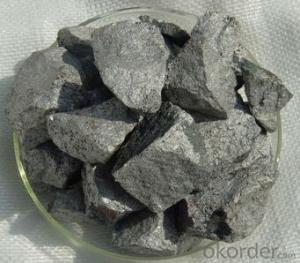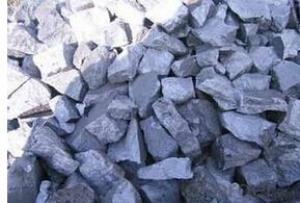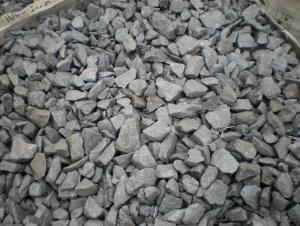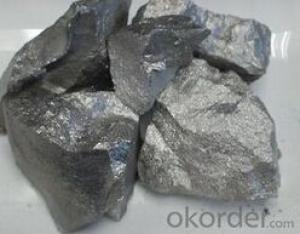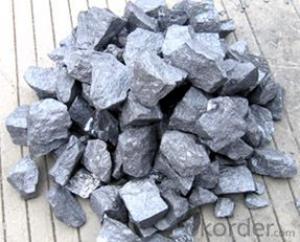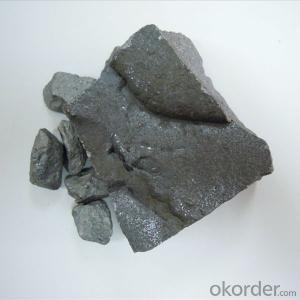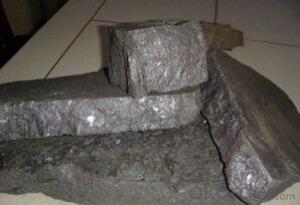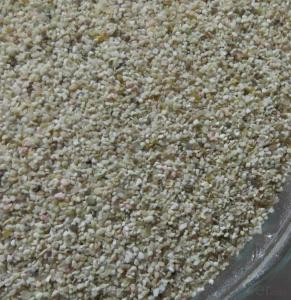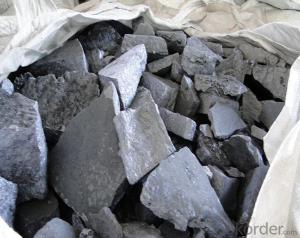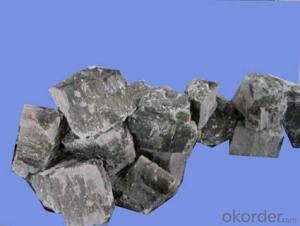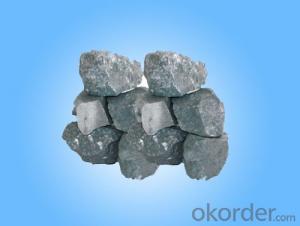Vietnam Ferro Silicon FeSi 72%
- Loading Port:
- China Main Port
- Payment Terms:
- TT OR LC
- Min Order Qty:
- -
- Supply Capability:
- -
OKorder Service Pledge
OKorder Financial Service
You Might Also Like
Specifications
Atomised Ferrosilicon 15%
Si:14-16%
CIQ,ISO,SGS Certification
Free Sample
10 years history
Atomised Ferro Silicon 15 is a specialised powder product formed by melting FeSi75 with scrap and casting into a high pressure water jet. Particle size is typically between 212 microns and 20 microns. The principal properties of FeSi15%
are magnetism, corrosion resistance and density.
Atomised Ferro Silicon 15% is mixed in water to create a dense medium and finds uses in the mining and scrap processing industries. Dense medium separation is a gravity separation technique which creates a medium with a specific density.
This medium allows lights to float and heavies to sink, thus permitting separation due to density. The process typically
separates aluminium, magnesium and mixed heavy metals such as copper alloys, thereby increasing overall scrap
metal recycling rates. After sizing, the mixed feed is screened and then sent to a drum containing magnetite media
which removes the lower density waste (rubber, plastic, etc) and light metals such as magnesium alloys.
The heavy concentrated scrap is then directed to a second drum containing FeSi media which separates the aluminium
from other metals. These two media, namely Magnetite and FeSi, create different media densities and can be adjusted,
within certain limits.
Atomised Ferro Silicon 15% is usually supplied in big bags or in steel drums.
Bulk chemical composition | |
| Element | Specification, % |
| Silicon | 14-16 |
| Iron | 78-82 min |
| Carbon | 0.5-1.2 max |
| Aluminium | 0.04 typical |
| Titanium | 0.05 typical |
| Physical Properties | |
| Relative density | 6.7-7.1 g/ml |
| Apparent density | 3.3-4.0 g/ml |
| Magnetic susceptibility | 59m3/kg |
| Non-magnetics | 1.5%max |
FACTORY:
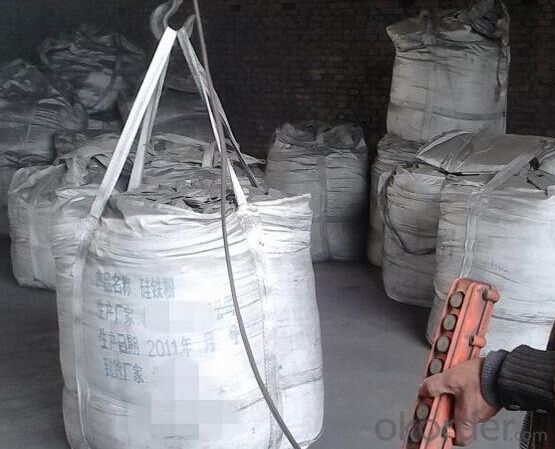

- Q: What are the three types of commonly used cemented carbides?
- As the mass fraction of cobalt increases, the hardness and wear resistance decrease, and the flexural strength and toughness increase.M class (equivalent to our YW class), cemented carbide is based on WC, TiC, Co, and then added TaC (or NbC). After the addition of TaC (or NbC), the comprehensive properties of cemented carbide were improved. This kind of cemented carbide can process both cast iron and non-ferrous metals, and also can process steel materials. It can also process difficult materials such as high temperature alloy and stainless steel. Commonly used brands are YW1 and YW2.
- Q: What is the difference between them?From hardness, abrasion resistance analysis!
- Is the use of metal carbide hard alloy with high heat resistance and high wear resistance (WC tungsten carbide, titanium carbide, tantalum niobium carbide TiC TaC, NbC etc.) and metal binder (cobalt, nickel and molybdenum) powder metallurgy products under high temperature sintering. Its hardness is 93 HRA8, high temperature resistance of 850 ~ 1000 C, has good abrasion resistance, allowing the use of the cutting speed can reach 100 ~ 300m / min, can be a variety of materials including machining hardened steel, hard alloy is commonly used tungsten cobalt (YG), tungsten titanium cobalt (YT) and general hard alloy (YW) three.Diamond is an allotrope of carbon, natural diamond and diamond two.
- Q: What are the features of cemented carbide YG8 knives?
- So professional, do not understand the normal, YG8 are used for processing pig iron and other artifacts
- Q: What is hard alloy grinding?
- Green silicon carbide grinding wheel, green silicon carbide hardness brittleness is higher than black silicon carbide, abrasive sharp, good thermal conductivity, suitable for grinding hard alloy, optical glass, ceramics and other hard brittle materialThe diamond grinding wheel than boron carbide, silicon carbide, corundum and other general grinding blade grain made of sharp corner, small abrasion, long service life, high productivity, good processing quality, but the price is expensive, it is suitable for the grinding of hard alloy, ceramic, semiconductor and other high hardness brittle hard material.
- Q: What kinds of carbides are there? How should we choose in production?
- There are three kinds of cemented carbides commonly used: tungsten carbide cobalt carbide (YG), tungsten cobalt titanium carbide (YT) and general cemented carbide (YW).Because of high hardness and good hardness, cemented carbide is suitable for making cutters.
- Q: Can ceramic tools process cemented carbides?
- No, ceramic cutters are usually used to process cast iron (high speed machining) and high hardness steel (Cui Huogang).Generally, the hardness of ceramic tools reaches HRA91-95, while the hard alloy can reach HRA93.The main components of ceramic tool materials are Al2O3 with high hardness and melting point. Si3N4 and other oxides and nitrides, and then added a small amount of metal carbide, oxide or pure metal additives, formed by pressing, sintering, and then a tool material. Its hardness can reach HRA91 ~ 95, and the hardness of HRA80 can still be kept at the cutting temperature of 1200 DEG C. In addition, the chemical inertia is large, the friction coefficient is small, and the wear resistance is good, and the service life of the processed steel pieces is 10~12 times of that of the hard alloy.Its major disadvantages are brittleness, low bending strength and low impact toughness. Therefore, it is mainly used for semi finishing and finishing, high hardness, high strength steel and chilled cast iron and other materials. Commonly used ceramic cutting tools are alumina ceramics, composite alumina ceramics and composite silica ceramics.Taiwan is hard gold metal carbide with high heat resistance and high wear resistance (WC tungsten carbide, titanium carbide, tantalum niobium carbide TiC TaC, NbC etc.) and metal binder (cobalt, nickel and molybdenum) powder metallurgy products under high temperature sintering. The hardness of HRA8 9 ~ 93, 850 ~ 1000 DEG C high temperature resistant, has good abrasion resistance, allowing the use of the cutting speed can reach 100 ~ 300m / min, can be a variety of materials including machining hardened steel, therefore it is widely available.
- Q: How hard metal is welded with stainless steel?
- Oxyacetylene brazing, using copper wire dipped in copper flux, brazing carbide and stainless steel.
- Q: Several hard alloy cutter lathe with?
- YG car, pig iron and so on, YT, steel and the like, high temperature resistant, YW car alloy steel, the highest strength.
- Q: belong to raw material? After buying instockroom directly under the workshop to account for 5The company is small, no warehouse, do not fill in a single storage, the parts purchased directly to use, how to do?It's so complicated. Is there a simple way to do it?
- Bolts are standard partsDiverter and mutual inductor belong to instrument classGears and chains belong to mechanical partsTo have a task list of tasks, facilitate the cost accounting of this task.Establish simple running account, operator, operator's signature and use.
- Q: What does "YC20.1 carbide" brand mean?
- PriceFor example, the ordinary 20 party 90 degrees welding tool used A320 blade, the price of 11 yuan, non tax written price /20120716 Edition
Send your message to us
Vietnam Ferro Silicon FeSi 72%
- Loading Port:
- China Main Port
- Payment Terms:
- TT OR LC
- Min Order Qty:
- -
- Supply Capability:
- -
OKorder Service Pledge
OKorder Financial Service
Similar products
Hot products
Hot Searches
Related keywords
